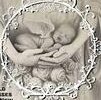How to Organise a Child Funeral
A child funeral is an opportunity for family and friends to come together, share photos, stories and memories of your baby, child or teenager who has died. The service can be as long or short as you wish and can be held at a venue of your choice such as your home, a community space, a church, a hotel or even a park or beach. A funeral provides a time and place to connect with loved ones who have experienced the same loss and to help us make sense of what has happened. Often, children want to be involved and it is important that they are encouraged and supported to do so. For some families it is helpful to involve their child right from the beginning, for others it works best to allow them to attend a funeral without parental involvement (with close adult supervision). Children need to be prepared for what is happening and this can begin at any age. It is important to sit down with your children, or the child you are caring for and talk about what is going to happen at a funeral and how they might feel. It is also important to explain the logistics of a funeral such as who will be there, how long the services might last and how the body will be taken care of. Providing children with all of the information they need will empower them and help them to understand what is happening. This can help them to decide if they want to attend a funeral, but it is also OK for children to change their mind on the day and this should be respected. If you are worried about how your child might cope at a funeral or you are not sure they will want to attend, it can be helpful to enlist the help of another friend or family member to support them and look after them for the duration of the ceremony. It may also be helpful to arrange a break for them away from the setting and provide them with a quiet space to rest or play, such as a garden at the crematorium or cemetery. Some children, especially those who have been in care or who have had medical complications, do not want to go to a funeral and this is completely normal. It is however, important to give your child as much information as possible and listen to them to understand their decision. Many parents say that finding ways to honour their child and bring a sense of meaning to what has happened helps them manage the grief. This can be through a special celebration of life ceremony, having a message board at the funeral or graveside or by having a candlelight vigil at home. Other parents also like to have a memorial tree planted, join a support group or donate to charities that honour the life of their child. All of these things can help them to process the grief and move on.
